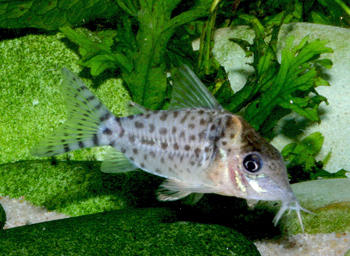need held in identification of my new corydoras
Posted: 10 Mar 2010, 22:52
Hi,
since a week I have 8 new Corydoras.
They have been ordered from the zoo-shop as C. punctatus WF,
but the Corys are no C. punctatus.
I have checked all my books and the internet but I have no idea,
which Corydoras I have bought.
All I know is that they are WF Corydoras.
They are appr. 4,5 - 5cm total lenght.
Some have a type of wormlines on their heads (maybe males?).
They are not active during the day, but in the evening they start to live
Not like all my other Corydoras (metae, axelrodi and schultzei).
I have made the pictures 1 hour after I have bought the Corys.
Hope they are good enough and you can help me to give my Corys an ID.
Sorry, if my english is not as good as it should be.
Regards from Germany
Michaela
since a week I have 8 new Corydoras.
They have been ordered from the zoo-shop as C. punctatus WF,
but the Corys are no C. punctatus.
I have checked all my books and the internet but I have no idea,
which Corydoras I have bought.
All I know is that they are WF Corydoras.
They are appr. 4,5 - 5cm total lenght.
Some have a type of wormlines on their heads (maybe males?).
They are not active during the day, but in the evening they start to live
Not like all my other Corydoras (metae, axelrodi and schultzei).
I have made the pictures 1 hour after I have bought the Corys.
Hope they are good enough and you can help me to give my Corys an ID.
Sorry, if my english is not as good as it should be.
Regards from Germany
Michaela



